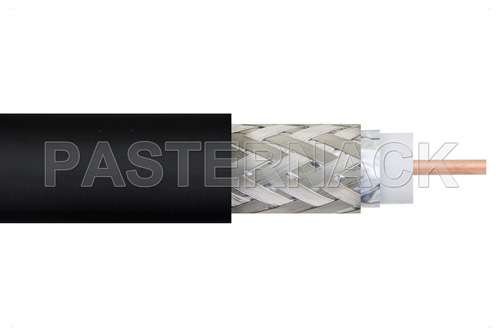
LMR Low Loss Cable
When looking into coaxial cable for a variety of applications, from commercial wireless to audio/visual broadcast, it is not uncommon to come across coaxial cable types labeled as LMR-, CFD-, OFC-, etc. at several different indicators, such as 195, 200, 240, 400, or 600. An example of this is Low Loss Flexible LMR-400 Plenum Rated Coaxial Cable.
It may appear that LMR, CFD, OFC are some types of standards or other technical designation. However, these designations are merely product line designations from popular brands of coaxial cable that have performed well over several decades. Hence, these cable types and brands are well known throughout parts of the industry and are given designations without much explanation. LMR, RFC, and CFD simply refer to different manufacturers. Several other cable brands are often referred to as “LMR-equivalent” in recognition of the market success of LMR coaxial cables.
The numbers after the lettered designations, however, do indicate a technically critical specification. The following numbers are in milli-inches and describe the thickness of the shielding around the cable. The thickness of the shielding around these cables directly correlates with the loss per unit length of these cables as well as the RF shielding effectiveness. Typically, thicker shielding in a coaxial cable will result in lower loss and enhanced RF shielding. For instance, a LMR-200 grade coaxial cable will have a 0.200 inch thick shielding and will have more loss per unit length and less RF shielding than a LMR-400 grade coaxial cable with 0.400 inch thick shielding.
It is important to note that though there are many LMR cables and equivalents on the market, the manufacturing quality and specifications all differ. These designations are generally useful in quickly identifying low loss coaxial cable solutions that are common in the marketplace and not a replacement for properly specifying a cable for a given application. There are also sub-varieties of LMR cables and LMR equivalents. These application specific types of LMR cables include solutions rated for indoor, outdoor, riser, plenum, audio/video (A/V) use, among others. Generally, LMR and LMR equivalents are made to be high performance and flexible coaxial cabling with an understood standard of quality construction. Given the prevalence of LMR cable types, however, there are a dearth of counterfeit cables and copies that may demonstrate misleading levels of performance when compared with authentic LMR cables.




 Pasternack Blog
Pasternack Blog
